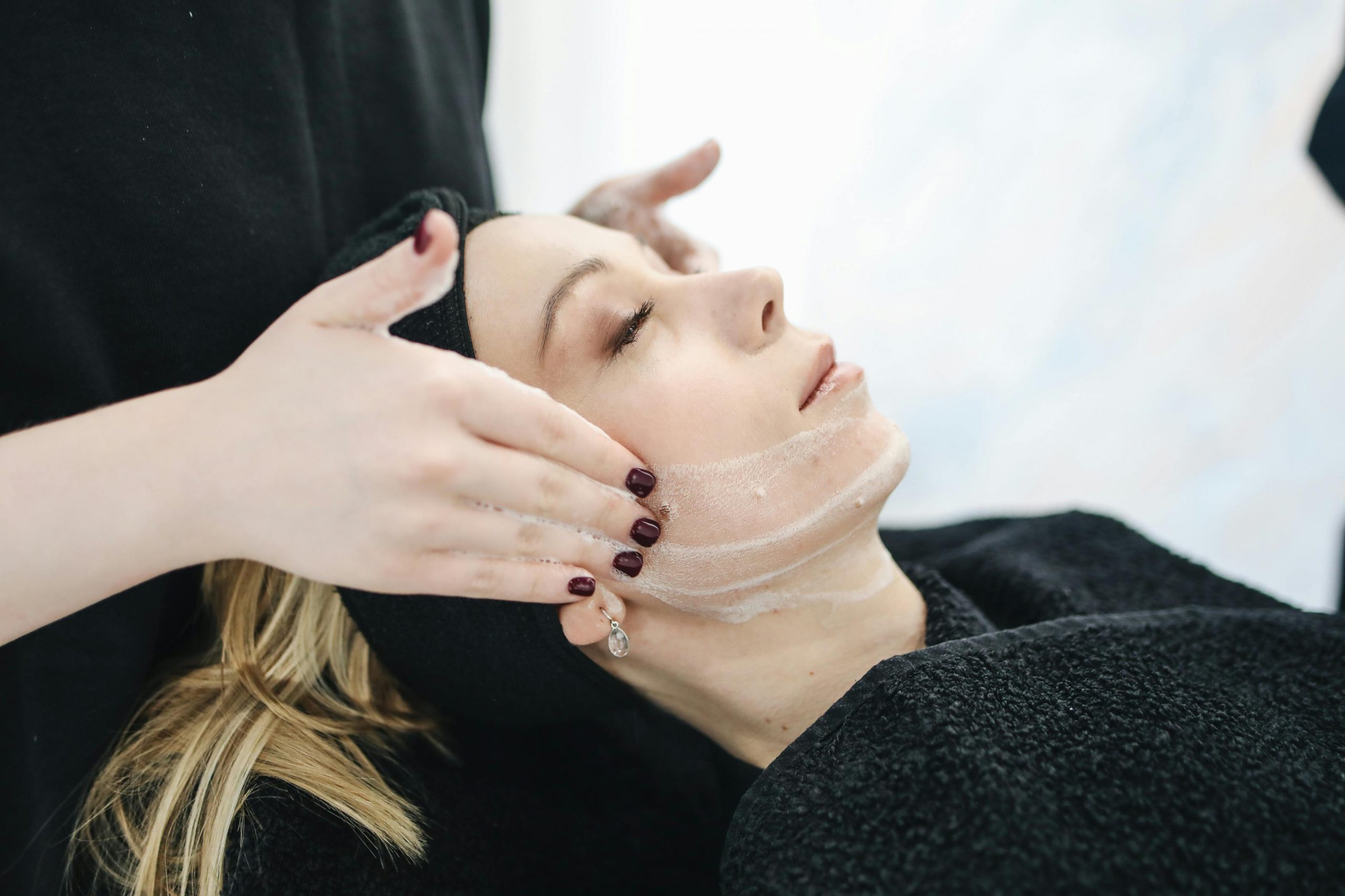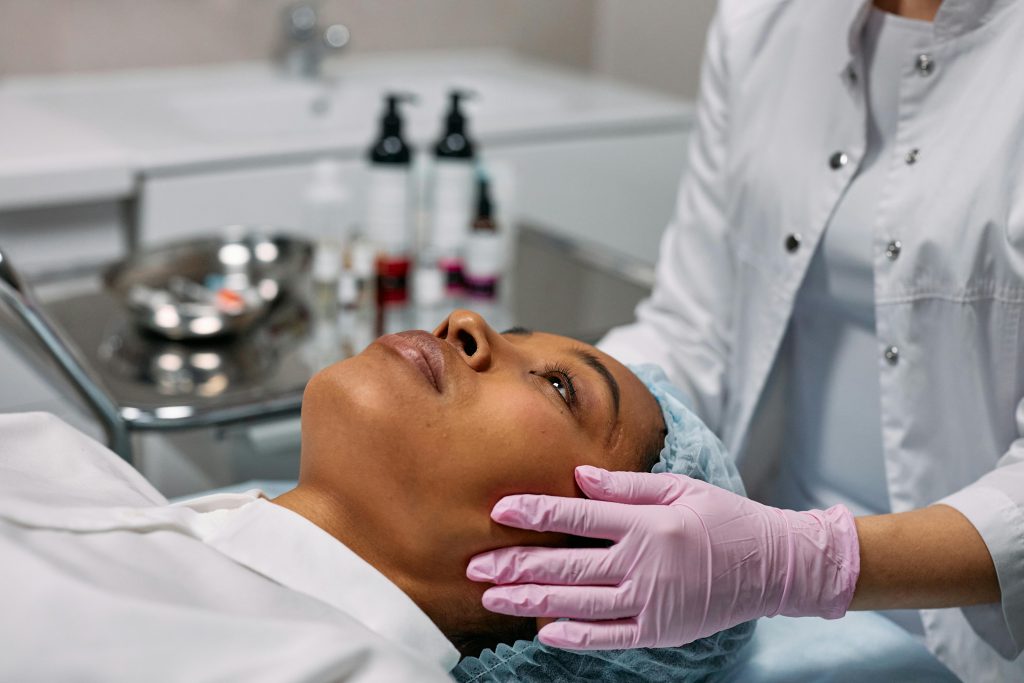Highlights
- Different skin types—oily, dry, combination, sensitive, or mature—require specific cosmetic treatments for the best results and safety.
- Popular treatments like facials, chemical peels, microneedling, and laser therapies can be highly effective when matched correctly to your skin type.
- Professional guidance from dermatologists or licensed estheticians helps prevent irritation, hyperpigmentation, or ineffective results.
- Factors beyond skin type—like downtime, cost, and lifestyle—should be considered before committing to treatments.
- Combining at-home care with professional treatments ensures lasting results and overall skin health.

The world of cosmetic treatments has grown rapidly, offering countless options for healthier, smoother, and younger-looking skin. From facials to lasers, injectables to peels, the choices can feel overwhelming. But not all treatments are right for every skin type. Choosing the wrong one can lead to irritation, wasted money, or even long-term damage.
That’s why understanding your skin type is essential before stepping into a clinic or spa. The right treatment not only enhances your appearance but also supports skin health, confidence, and overall well-being. This article will help you navigate the options, break down how each treatment works, and provide guidance for selecting the best choice based on your unique skin type.
Understanding Your Skin Type
The Main Skin Types
Before choosing a treatment, it’s important to identify which skin type you have:
- Normal skin: Balanced oil and hydration levels, few breakouts, and an even tone.
- Oily skin: Excess sebum production, shiny complexion, and enlarged pores prone to acne.
- Dry skin: Lacks natural oils, feels tight, rough, or flaky, especially in colder months.
- Combination skin: Oily in the T-zone (forehead, nose, chin) but dry or normal on the cheeks.
- Sensitive skin: Easily irritated, prone to redness, stinging, or allergic reactions.
- Mature or aging skin: Reduced elasticity, wrinkles, fine lines, pigmentation, and dryness.
Why Skin Type Matters
Skin type influences how treatments interact with your skin. For instance, a strong chemical peel that works wonders for oily or acne-prone skin could leave sensitive skin red and inflamed. Similarly, certain laser treatments may not be safe for darker skin tones due to the risk of pigmentation changes. By tailoring treatments to skin type, you maximize benefits and minimize risks.
Common Cosmetic Treatments Explained
Facials
Professional facials go far beyond relaxation. They are customized to cleanse, exfoliate, and nourish skin, leaving it refreshed. Types include:
- Hydrating facials for dry or aging skin.
- Acne facials with deep cleansing and extractions.
- Oxygen facials for dull, tired-looking skin.
- Anti-aging facials with peptides and antioxidants.
Chemical Peels
Chemical solutions exfoliate the skin, removing damaged layers. Options include:
- Light peels (minimal downtime, best for mild acne or uneven tone).
- Medium peels (target deeper wrinkles and sun damage).
- Deep peels (dramatic results but longer recovery).
Microdermabrasion & Dermabrasion
These techniques exfoliate using crystals or a diamond-tipped device. They smooth rough texture and improve product absorption. Dermabrasion is deeper and usually requires downtime.
Microneedling
Tiny needles create controlled micro-injuries, stimulating collagen and elastin production. This reduces scars, fine lines, and large pores while improving firmness.
Laser Treatments
Laser technologies vary:
- Fraxel lasers target wrinkles and pigmentation.
- IPL (intense pulsed light) reduces redness and sun spots.
- CO2 lasers resurface deeply for dramatic anti-aging results.
Injectables (Botox and Fillers)
- Botox smooths dynamic wrinkles caused by facial expressions.
- Fillers restore lost volume in cheeks, lips, and under eyes.
Each of these treatments has its place, but results depend heavily on choosing one that aligns with your skin’s specific needs.
Choosing the Right Treatment for Your Skin Type

For Oily & Acne-Prone Skin
Oily skin often struggles with clogged pores and breakouts. Treatments that help include:
- Chemical peels with salicylic acid to unclog pores.
- Acne facials with deep cleansing and extractions.
- Laser treatments for acne scars and oil control.
Avoid treatments with heavy oils or overly abrasive exfoliation that may trigger more breakouts.
For Dry Skin
Dry skin lacks natural moisture and often feels rough or itchy. Best options are:
- Hydrating facials with hyaluronic acid and nourishing serums.
- Oxygen facials to infuse hydration and brighten.
- Light peels to gently remove flaky skin and boost product absorption.
Avoid deep peels or aggressive exfoliation that can strip what little moisture remains.
For Combination Skin
This skin type needs balance. Treatments that target both oily and dry areas work best:
- Customized facials that hydrate dry patches while clarifying oily zones.
- Mild chemical peels to even tone and texture.
- Microneedling for overall rejuvenation without over-drying.
For Sensitive Skin
Sensitive skin requires gentle approaches to avoid flare-ups. Consider:
- LED light therapy for calming redness and inflammation.
- Gentle facials with soothing, fragrance-free products.
- Hydration-based treatments to strengthen the skin barrier.
Avoid harsh peels, aggressive lasers, and strong chemical formulations.
For Mature or Aging Skin
Aging skin benefits from treatments that stimulate collagen and restore volume. Great options include:
- Microneedling for fine lines and firmness.
- Laser resurfacing to smooth wrinkles and pigmentation.
- Injectables to reduce wrinkles and restore youthful contours.
- Anti-aging facials with antioxidants and peptides.
Factors to Consider Beyond Skin Type
Even if a treatment matches your skin type, other factors affect your decision:
- Downtime & Recovery
- Facials: little to no downtime.
- Peels/lasers: may require days or weeks to heal.
- Budget
- Injectables and lasers can be costly, while facials and light peels are more affordable.
- Longevity of Results
- Botox lasts 3–6 months, fillers up to 18 months.
- Laser results may last years with proper care.
- Lifestyle & Goals
- Occasional glow-up vs. long-term anti-aging plan.
- Travel, work schedule, and commitments may affect what’s practical.
- Safety & Credentials
- Always seek licensed providers.
- A med spa that provides a variety of facial and cosmetic treatments is ideal because it offers multiple options under professional supervision.
Questions to Ask Before Choosing a Treatment
When consulting with a provider, prepare questions such as:
- What are the risks for my skin type?
- How many sessions are needed for results?
- What side effects or downtime should I expect?
- Can this treatment work with my current skincare routine?
- Are there alternatives that might be safer or more effective?
Asking these questions ensures you make an informed decision and avoid unnecessary risks.
At-Home Care to Complement Professional Treatments
Professional treatments are most effective when paired with consistent at-home care.
Essential Daily Routine
- Cleanser: Gentle, sulfate-free formula suitable for your skin type.
- Moisturizer: Hydrating products with ceramides or hyaluronic acid.
- Sunscreen: SPF 30 or higher every day.
- Active Ingredients: Retinoids, Vitamin C, and antioxidants for long-term support.
Lifestyle Support
- Nutrition: Eat a diet rich in antioxidants, healthy fats, and hydration.
- Exercise: Promotes circulation and healthy glow.
- Sleep: Allows skin repair and renewal.
- Stress Management: Meditation or relaxation techniques to reduce stress-induced flare-ups.
This combination extends the benefits of professional treatments while protecting overall skin health.
The Role of Professional Guidance
Skin care is not one-size-fits-all. Professional consultations help you:
- Identify your exact skin type with precision.
- Build a personalized treatment plan.
- Avoid ineffective or harmful treatments.
- Get ongoing adjustments as your skin changes with age, environment, and lifestyle.
Relying on expert advice ensures you spend wisely and achieve results that align with your long-term goals.
Conclusion
Choosing the right cosmetic treatment for your skin type is about more than beauty—it’s about protecting skin health and ensuring safe, lasting results. By understanding your skin type, exploring treatment options, and seeking professional guidance, you can confidently select treatments that rejuvenate and restore your complexion.
Pairing professional treatments with consistent at-home care and a healthy lifestyle ensures your skin remains vibrant, resilient, and radiant for years to come.
Your skin is unique, and the best results always come from personalized choices backed by knowledge and expert care.


